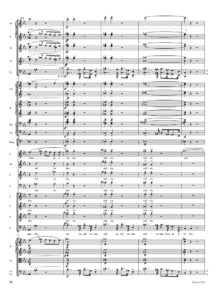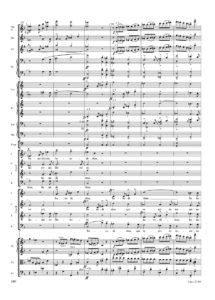Choral Book Review - Giuseppe Verdi: Requiem
Giuseppe Verdi: Requiem
Full score, CV 27.303/00
Vocal score, CV 27.303/03
Venanzio Valdinoci
journalist and singer
When Rossini died in 1868, Giuseppe Verdi proposed bringing together some of the most important Italian composers of the time to write a Mass in Rossini’s honour. He gave a sequence to each of them, taking for himself the final ‘Libera me’; the initiative was so successful that the work was completed long before the first anniversary of the great composer’s death. Unfortunately, for reasons of a political nature, the Messa per Rossini was never performed and fell into oblivion, being rediscovered only in 1988.
In 1873, the death of the great author Alessandro Manzoni was felt deeply throughout the country. Even Verdi was greatly affected by the enormous loss, and decided to dedicate to Manzoni the Messa da Requiem, a work he was completing at the time, while revisiting the earlier piece created in honour of Rossini. The composition was first performed in the church of San Marco in Milan on the first anniversary of Manzoni’s death, with the composer as conductor and a vocal quartet formed by Teresa Stolz (soprano), Maria Waldmann (mezzo-soprano), Giuseppe Capponi (tenor) and Ormondo Maini (bass).


This new edition by Carus-Verlag, edited by Norbert Bolin, is based on the original manuscript as the primary source and makes accessible one of the most important requiem settings of the 19th century in a modern scholarly edition. In particular, articulation, phrasing and dynamics are indicated with consistent precision. Editorial additions, by means of parallel passages, attempt to make Verdi’s intention clearer through the judicious use of diacritical markings. And a clearly organized disposition of the printed music makes the full score and vocal score easy to read.
The publication is made complete by a less expensive alternative in a clear, playable vocal score by Paul Horn, arranged to maintain the same quality as the full orchestra score.
Edited by Joel Hageman, USA, and Gillian Forlivesi Heywood, Italy